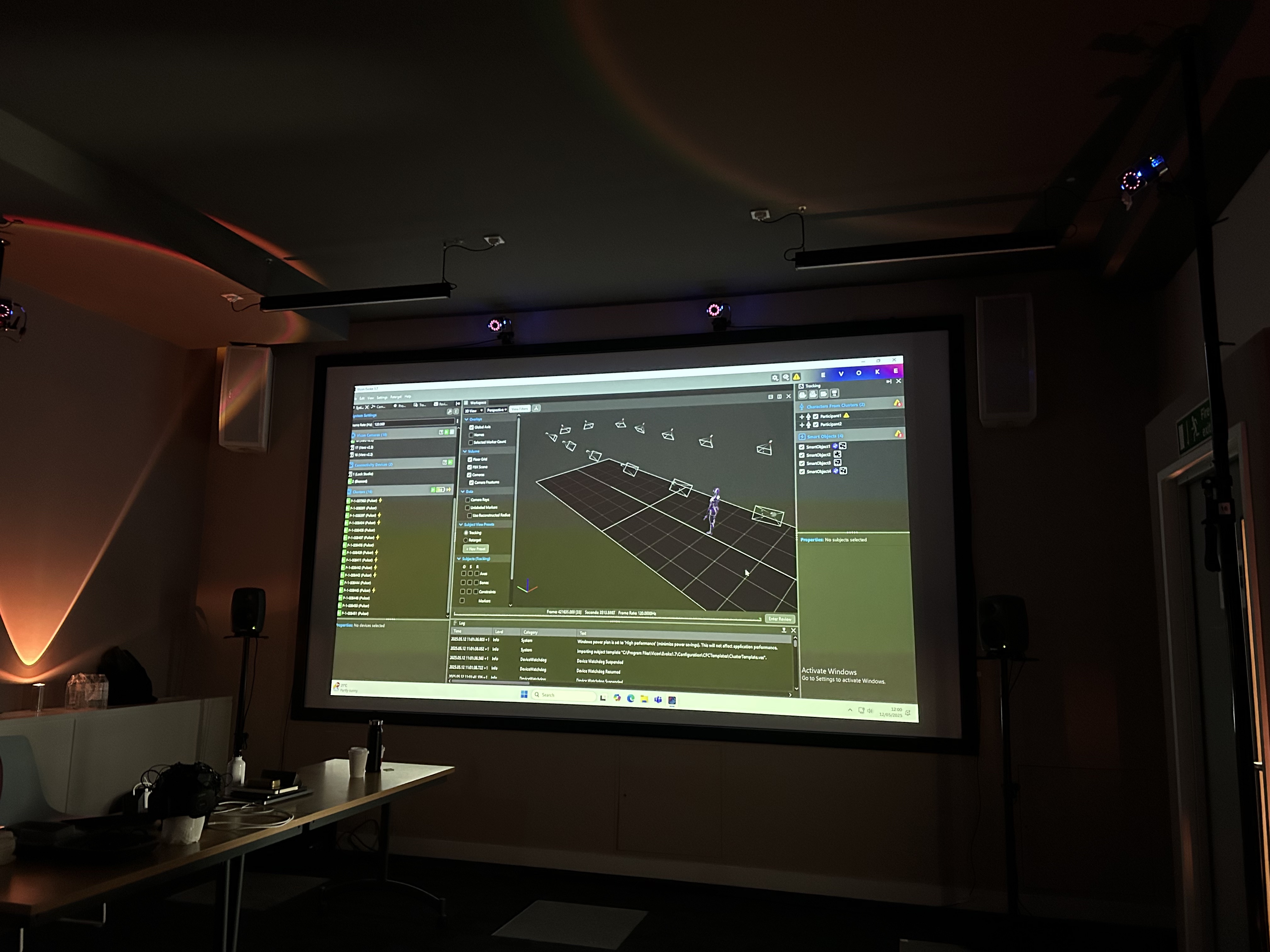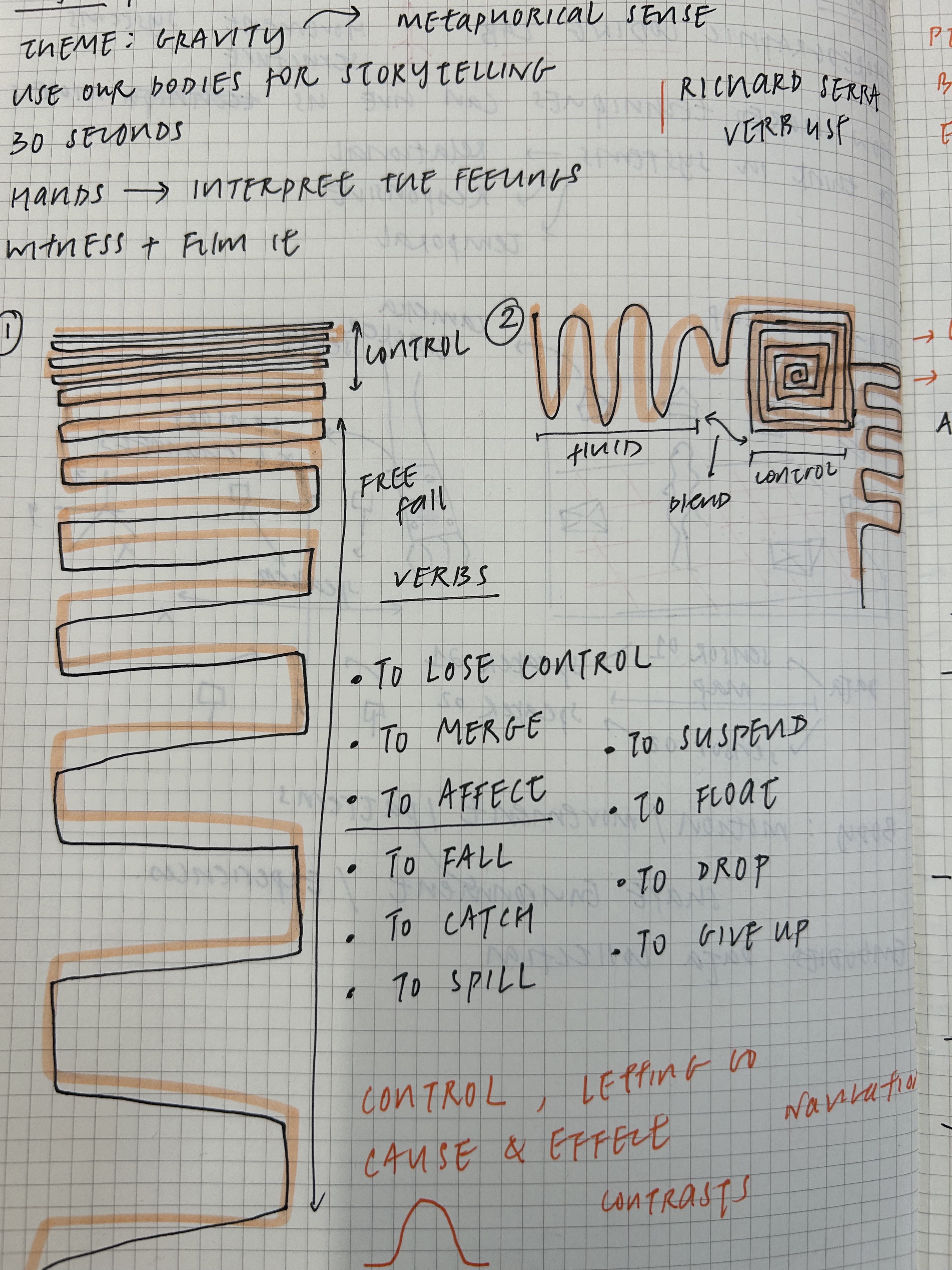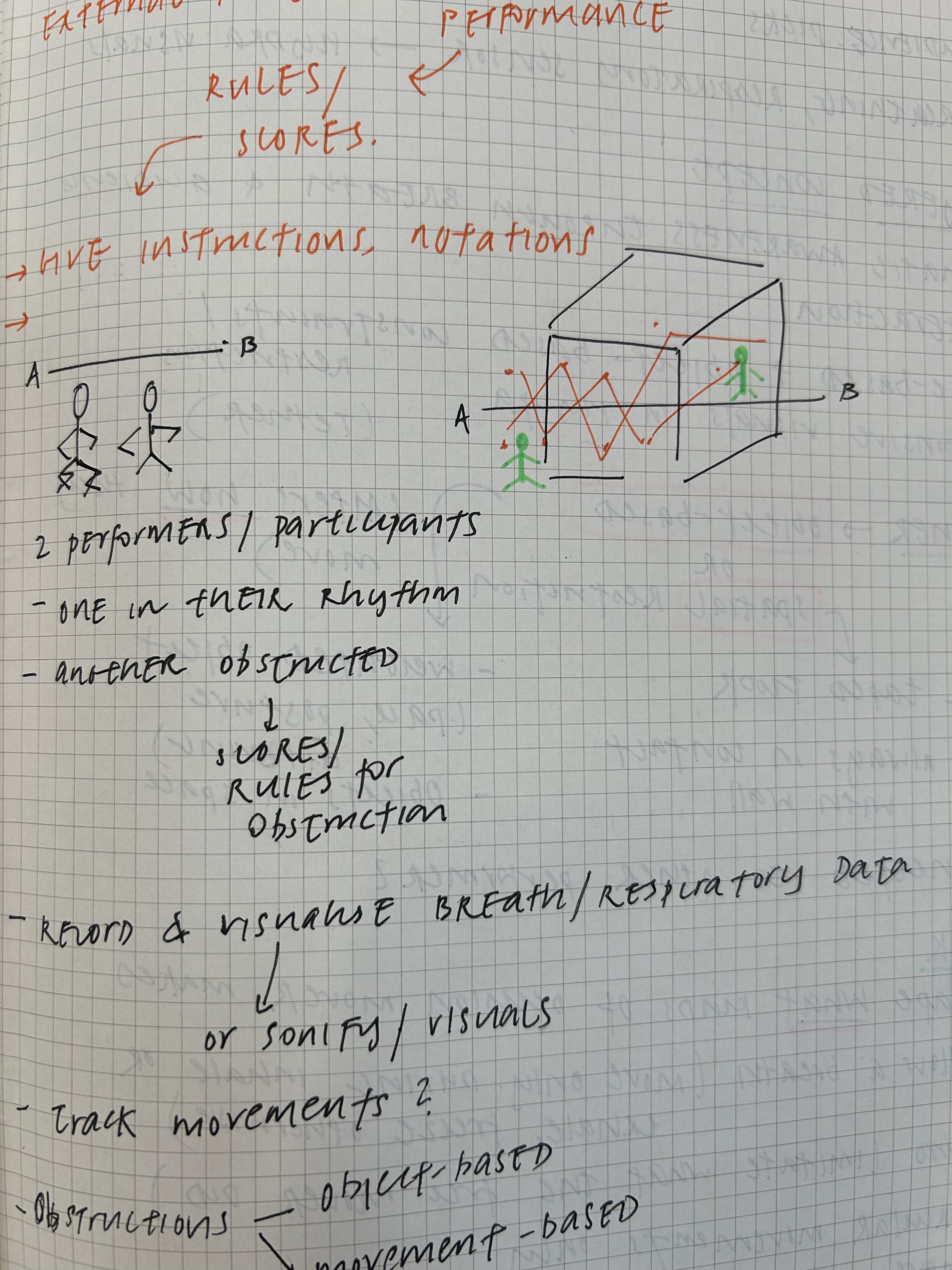May 2025
CCL – Day 02
Today was a bit of a mind-body stretch.
We began with a conversation with Tim Smith. Choreographer and researcher Nina Kov joined us as a facilitator. Her session flipped a few switches in how I think about choreography—not just as performance, but as a way of designing systems and processes.
She introduced the idea of applied choreographic thinking. Choreography as a logic. As a structure. As a way of thinking, designing, and building systems. It opened up some rich questions for how I approach my practice in tech and data — less from a place of control, and more from within the flow of interaction and embodied response.

We also touched on embodied cognition. I’ve read about it before — the idea that the body participates in thinking, not just the brain — but it landed differently today. Our bodies think with us; they know, remember, and interpret. Moving and observing others move, I felt the kind of intelligence that lives in weight shifts, gestures, proximity, stillness. The body understands systems before the brain can articulate.
Later, we were introduced to soma-based design process [1]. Unlike traditional design methods that start with goals or outcomes, soma-based approaches begin with felt experience — bodily awareness, breath, and affective states — and builds from there. It’s a slow, reflective process that prioritises sensing over solving. This way of working feels especially relevant in choreographic and interactive contexts, where meaning emerges through experience.




My collaborator Simon and I began developing our piece. The Path of Least Resistance is a live performance that explores the tension between will and limitation, breath and body, intention and disruption. One participant is asked to move from Point A to Point B, while following a set of increasingly restrictive or absurd instructions: some rule-based, others physical. These scores are designed to disrupt breath and challenge movement patterns, and provoke unexpected bodily responses.
A second performer — the “free agent” — moves alongside them. They act as a contrasting presence, initially fluid and unrestricted, then shifting into the role of disruptor by placing physical obstructions in the participant’s path.
Both performers wear respiratory sensors. We’re piping live breath data into Hydra and visualising it real time. The idea is to create a feedback loop between internal sensation and external environment.
We are still figuring out how to choreograph the scores. We want these to focus less on what to do and more on what it feels like to try, adapt, and to be push into new physical vocabularies.
A lot to sit with but we have hit a bit of a groove. Stay tuned.